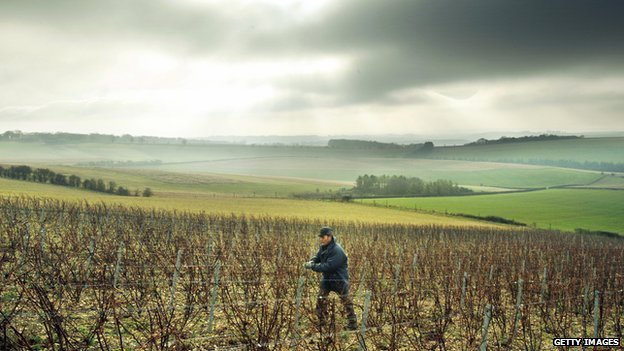The English wine industry is going from strength to strength. Regularly winning prestigious international awards, wines from a country previously regarded as unsuitable for grape-growing, are gaining a worldwide reputation for quality. Historically, it is generally accepted that the Romans introduced the vine to Britain and there are now around 430 vineyards in England and Wales, covering over 1,400 hectares, producing both sparkling and still wines.
Over two millennia, vineyards have come and gone, influenced by various factors, such as the advent and enduring influence of Christianity, invasions by the Vikings and Normans, Dissolution of the Monasteries and climate change. However, the modern revival began last century, first in the 1950s with the planting of new vineyards and the entrepreneurial brilliance of pioneers like Ray Barrington Brock, in particular.
The 1960s and 1970s then experienced a large expansion of viticulture in England and Wales. However, the last 20 years has seen huge growth and modernisation in the industry, plus a move away from the previously dominant Germanic wine styles and grape varieties towards alternatives, in particular those based on the traditional Champagne grapes. Furthermore, in the last two years, 500 hectares of vines have been planted and English Wine Producers (EWP) report that the 2013 harvest was the biggest to date. This equates to the highest ever volume of wine produced in England and Wales (almost 4.5 million bottles).
 Although plantings are predominantly in the southernmost parts of Britain, vineyards are found as far north as Yorkshire, as well as in East Anglia, the West Country and the Midlands. These encompass a range of grape varieties, including well-known international ones, plus others that are recognised to be well-suited to the British climate, including those of German names or origin, such as Reichensteiner, Schönburger, Bacchus and Dornfelder. Additionally, hybrid grape varieties, i.e. those with non-vinifera parentage, used in particular for their disease resistance, such as Seyval Blanc (white) or Regent and Rondo (red), have also proved popular, especially within blends.
Although plantings are predominantly in the southernmost parts of Britain, vineyards are found as far north as Yorkshire, as well as in East Anglia, the West Country and the Midlands. These encompass a range of grape varieties, including well-known international ones, plus others that are recognised to be well-suited to the British climate, including those of German names or origin, such as Reichensteiner, Schönburger, Bacchus and Dornfelder. Additionally, hybrid grape varieties, i.e. those with non-vinifera parentage, used in particular for their disease resistance, such as Seyval Blanc (white) or Regent and Rondo (red), have also proved popular, especially within blends.
Given the chalky soils in the South of England, the traditional Champagne varieties of Pinot Noir, Pinot Meunier and Chardonnay have flourished. As a result, the success story so far is dominated by the production of world-class sparkling wine (over 60% of total production now). Awards keep flowing in and according to EWP, no other country can match the success of the last 15 years – eight trophies for Best Sparkling Wine and four trophies for Best Sparkling Rosé in the world. Whereas England used to be considered too wet and too cold for serious wine production, this is not the case anymore. It is certainly no longer a huge shock when an English sparkling wine beats Champagne to win a major international competition.
more on alcoholprofessor.com




